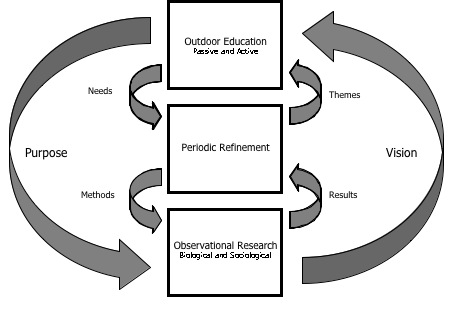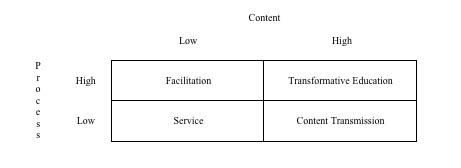 |
June 2010
|
June 2010 // Volume 48 // Number 3 // Ideas at Work // v48-3iw4
Virginia's Link to Education About Forestry (LEAF) Program
Abstract
Virginia's LEAF Program incorporates educational opportunities with heritage experiences and technology to advance forestry education in the Commonwealth. Statewide heritage-based outdoor classrooms use an integrated outdoor learning system to provide both formal and informal education. Online learning modules are coupled with the classrooms to provide forestry education for various stakeholders. The LEAF Program's ultimate goal is to provide compelling and convenient services for those presently involved in forestry education, while also increasing the visibility and appreciation of forestry among the general public.
Introduction
Virginia's Link to Education about Forestry (LEAF) Program aims to advance forestry education in the Commonwealth. Virginia Cooperative Extension (VCE) and Virginia Department of Forestry (VDOF) personnel currently offer numerous education and technical training programs for various stakeholders. Loggers, foresters, landowners, policy-makers, interested citizens, and youth from the rural Southwest to the heavily populated North regularly benefit from their efforts.
Virginia's Forest Landowner Education, SHARP (Sustainable Harvesting and Resource Professional) Logger, Master Naturalist, and 4-H programs, along with VDOF's Conservation Education Program and five VCE district-level forestry agents constitute a remarkable array of resources. While a variety of constituents regularly take advantage, the truth of the matter is that reaching new audiences is often difficult. LEAF seeks to make positive strides on this front via a VCE VDOF partnership to develop outdoor and online classrooms that provide attractive opportunities for younger, more diverse audiences.
Rationale
Reaching underserved constituents is one of the most important challenges for forestry educators (Hughes et al., 2005). Urban sprawl and intergenerational transfers are fostering a new period typified by larger numbers of younger owners interested in managing their forests but often lacking requisite knowledge (Sampson & DeCoster, 2000; Butler & Leatherberry, 2004; Pinchot Institute for Conservation, 2005). At the same time, greater technical demands on loggers and foresters are expected in light of increases in wood procurement and invasive threats to health and productivity (Pimentel, Lach, Zuniga, & Morrison, 2000; USDA Forest Service, 2001). A corresponding, albeit broader, aspect of consequence is a decline in the public's connection to forestry (Best, 2002).
Taken together, these circumstances require reinforcing the state's capacity in terms of owner education, forester and logger training, citizen communication, and youth engagement. LEAF is a strategy for improving the visibility and appreciation of forestry among the public and a technical tool for reaching greater numbers of stakeholders. With the help of numerous partners, LEAF supports two statewide initiatives to accomplish its objectives: 1) heritage-based outdoor classrooms and 2) online education. The former is an effort to reach new audiences in an outdoor setting, while the latter seeks the same indoors using distance education.
Heritage-Based Outdoor Classrooms
More and more, people seek experiences that include a connection to history (Kelleher, 2004). This trend presents a considerable opportunity for forestry education in Virginia. The state's rich history offers important prospects for creating outdoor LEAF classrooms that provide alluring venues for coordinated demonstration, entertaining interpretation, and self-guided communication. Classrooms are based on an integrated system of research and learning.
An integrated outdoor learning system is defined as an interconnected process developed after a model published by the lead author in Germain, Munsell, and Brazill (2007) (Figure 1). Specifically, periodic refinement translates programmatic research into future educational and research themes using feedback. What is learned is shared; education informs research and vice versa. Integrated outdoor learning systems are in various stages at several key heritage sites in Virginia.
Figure 1.
Outdoor Learning System
Developed After Germain et al. (2007)

James Madison's Montpelier
A former tobacco plantation and home of the 4th president of the United States, Montpelier also houses over 1,500 acres of forest, including 200-acres of National Landmark old-growth. LEAF programs will focus on the cultural history of the forest and restoration activities in second-growth forests abutting the National Landmark stand.
Appomattox-Buckingham State Forest (ABSF)
The ABSF is Virginia's largest state forest. It houses numerous demonstrations and research trials and is adjacent to Appomattox, where Robert E. Lee surrendered to Ulysses S. Grant. LEAF is developing an audio driving tour that will merge biological and social history with contemporary management activities.
Cyrus McCormick Farm/Shenandoah Valley Agricultural Research and Extension Center
This Natural Heritage site and Extension center is the family home of Cyrus McCormick, inventor of the mechanical reaper. LEAF programs will demonstrate how landowners can enhance farm benefits by implementing sustainable forestry in concert with forage regimes.
Conway-Robinson State Forest
Adjacent to Manassas National Battlefield, the Conway-Robinson is used for environmental education, hiking, mountain biking, preservation of historic sites, watershed protection, and timber production. LEAF programs will focus on more closely integrating battlefield tourism and forestry education.
Powell River Project (PRP)
At the PRP in Wise Virginia, LEAF is working to take the next step in coalfield reclamation by demonstrating sustainable forestry in natural and planted forests on former surface coal mine sites. LEAF programs will offer sustainable forestry education in a setting profoundly affected by historical land use.
Arlington County
Located across the Potomac from Washington D.C., Arlington is Virginia's most heavily toured county. The urbanized jurisdiction is also home to abundant urban forestry. Through LEAF, Arlington's urban forestry efforts can be integrated into existing and new outdoor tourism and education.
Additional classroom information is available at <http://www.valeaf.org/>.
Online Education
Online learning is an increasingly viable mechanism if physical attendance at forestry education is constrained. It offers promise for reaching audiences that rely on or prefer computer-based education (Gaytan, 2007). LEAF is developing comprehensive online opportunities for foresters, loggers, private forest owners, and teachers. Content will include stand-alone learning modules and house downloadable programs that correspond to LEAF's outdoor classrooms.
Appropriately matching online delivery to the content and process of each is important. Ewert (2001) offers a useful decision-making framework (Figure 2). When low-content opportunities are developed, delivery processes will either facilitate dialogue and information transfer or provide rapid services such as directing users to helpful websites. Conversely, delivery modes in high-content situations will require offerings such as robust audiovisual modules or a series of interactive, live Webinars.
Figure 2.
Online Delivery Decision-making
Framework Following Ewert (2001)

LEAF online education is hosted on its Web site <http://www.valeaf.org/>.
Summary
As LEAF moves forward, existing partnerships will be strengthened, new partnerships formed, and impacts expanded. Eventually, LEAF classrooms will span the Commonwealth, capturing every major forest type and management situation. Online learning will provide affordable, accessible education. Ultimately, LEAF will provide alluring and convenient services for those presently involved in forestry education, while more effectively engaging audiences that are not.
References
Best, C. (2002). America's private forests: Challenges for conservation. Journal of Forestry, 100(3), 14-17.
Butler, B.J . & Leatherberry, E. C. (2004). America's family forest owners. Journal of Forestry, 102(7), 4-9.
Ewert, D. M. (2001). Personal Written Communication, 16 September 1999. In: McDowell, G.R. Land-grant Universities and Extension into the 21st Century: Renegotiating or Abandoning a Social Contract. 1stt ed. Ames ; Iowa State University Press. 214p.
Gaytan, J. (2007). Visions shaping the future of online education: Understanding its historical evolution, implications, and assumptions. Online Journal of Distance Learning Administration, X(II). Retrieved July 14, 2009 from: http://www.westga.edu/~distance/ojdla/summer102/gaytan102.htm
Germain, R. H., Munsell, J.F & Brazill, K. (2007). The New York City Watershed Model Forests revisited five years later: An assessment of successes, failures, and challenges for the future. Journal of Extension [On-line], 45(3) Article 3FEA6. Available at: http://www.joe.org/joe/2007june/a6.php
Hughes, G., Measells, M. K., Grado, S. C., Dunn, M. A., Idassi, J. O., & Zielinski, R. J. (2005). Underserved forest landowner workshops: Opportunities for landowners and Extension. Journal of Extension [On-line], 43(4) Article 4FEA5. Available at: http://www.joe.org/joe/2005august/a5.php
Kelleher, M. 2004. Images of the past: Historical authenticity and inauthenticity from Disney to Times Square. CRM: Journal of Heritage Stewardship, 1(2). Retrieved July 14, 2009, from: http://crmjournal.cr.nps.gov/Print.cfm?articleIDN=1903
Pimentel, D., Lach, L., Zuniga, R., & Morrison, D. (2000). Environmental and economic costs of nonindigenous species in the United States. Bioscience, 50(1), 53-65.
Pinchot Institute for Conservation. 2005. The new generation of private forestland owners: Brace for change. The Pinchot Letter, 10(2), 1-4.
Sampson, R. N. & DeCoster, L.A. (2000). Forest fragmentation: Implications for sustainable private forests. Journal of Forestry, 98(3), 4-8.
USDA Forest Service. 2001. 2000 RPA assessment of forest and rangelands. FS-687. Washington, DC: U.S. Department of Agriculture, Forest Service. 78p.




